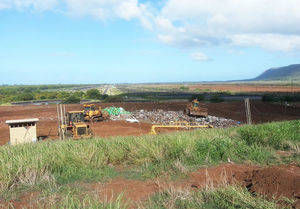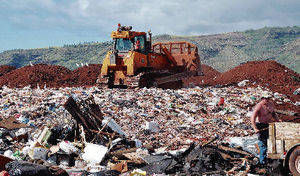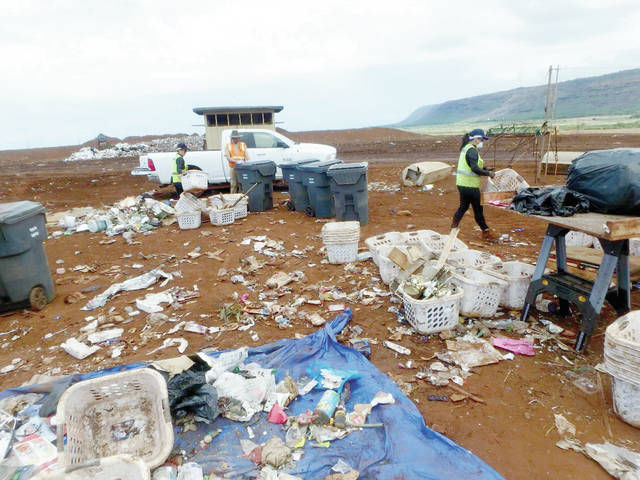LIHUE — Waste from construction sites and paper products are the most common kinds of waste at the Kekaha Landfill. Those two materials make up about 42 percent of all disposed waste, according to a 2016 Waste Characterization Study of
LIHUE — Waste from construction sites and paper products are the most common kinds of waste at the Kekaha Landfill.
Those two materials make up about 42 percent of all disposed waste, according to a 2016 Waste Characterization Study of the landfill, conducted by Cascadia Consulting Group.
The County of Kauai contracted the group to analyze what is in the landfill.
“The intention of a study like this is to collect data that can drive and improve programs for recycling,” said Jessica Coe, senior associate for Cascadia Consulting Group.
She presented the findings to the Public Works/Parks and Recreation Committee on Wednesday.
Paper makes up 18.4 percent while construction waste makes up 23.7 percent. Those materials include concrete, asphalt paving, asphalt roofing, clean lumber, treated lumber, other wood waste, gypsum board, and rock and soil, according to the study.
For 20 days, the group came to the island on two separate occasions. Both commercial and residential waste was examined. Vehicles arriving at the Kekaha Landfill were randomly selected to be a part of the study, and 162 samples were surveyed, Coe said.
Other classes of waste found include other organics, like leaves and grass, sewage sludge, prunings and trimmings and carpet, which make 18 percent of the landfill; plastic, at 11.5 percent, food at 10.3 percent.
Coe said the group was interested in learning how people on Kauai dispose of their food.
Unpackaged non-meat made up the majority of food in the landfill, Coe said.
Councilman Mason Chock asked what the county should be working on.
“Can you tell us where we are in terms of our solid waste plan and our goals?” he said. “Based on what we’re seeing here, are we on track?”
Allison Fraley, solid waste coordinator, said the county could come up with ways to keep paper and plastic from getting into the landfill.
“We’re going to have to regroup with the administration and look again at our goals and develop programs accordingly,” Fraley said.
Mel Rapozo, council chair, wanted to know how the county can be proactive in making sure the island isn’t overtaken by garbage.
“We don’t have many options. We have a landfill that is filling up quite rapidly, and in my personal opinion, the new site won’t be ready in time,” he said.
The Kekaha Landfill is expected to be full by 2026, and the county is proposing a new landfill between Ma‘alo Road and Kalepa Ridge.
“We have all that trash that is going to go somewhere,” Rapozo said. “I think we have to start thinking about the worst case scenario.”
Coe said she didn’t immediately have an answer to the question. But Fraley said being on an island presents a challenge because trash can’t be trucked to a neighboring county.
In his visits to the transfer stations, Councilman Ross Kagawa said he’s noticed a large amount of recyclables being thrown away.
“I personally see green waste. I see cardboard. Things that shouldn’t go to the transfer station,” he said. “The workers do no monitoring of items being done there, and that’s a simple way of reducing necessary waste being dumped into the landfill.”
He suggested the workers take a more active role in sorting items being turned into the transfer stations.
“My philosophy to trying to solve difficult problems ‘keep it simple, stupid,’” he said. “When we see and hear that you have items that can be readily recycled, and it’s going to the landfill, that’s the easy target.”
It’s about education, Kagawa said.
“The whole community needs to step up and go 100 percent to the programs we have,” he said.




